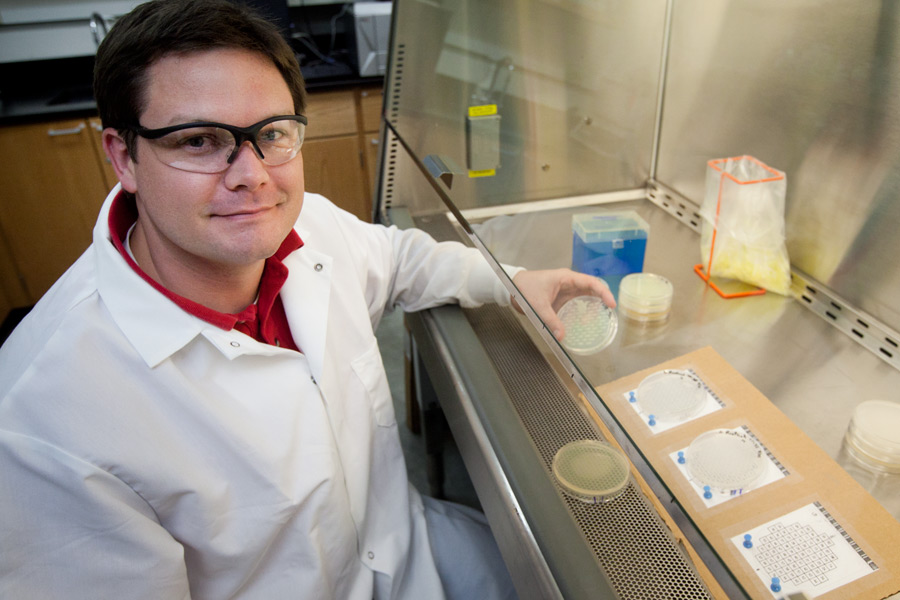
In August, President Obama announced that the U.S. Departments of Agriculture, Energy and Navy will invest up to $510 million over the next three years to produce biofuels for aviation and marine vehicles, making drop-in biofuels a national priority.
The Navy alone would need 336 million gallons of drop-in advanced biofuel each year to meet their target of obtaining half of their energy from alternative sources by 2020.
Scientists at the GLBRC are using synthetic biology and E. coli bacteria to generate the cellulosic biofuel technologies needed to meet this massive call for drop-in fuels.
“In an ideal world, you could go to the gas station and fill up your car or truck with a biofuel that is indistinguishable from today’s petroleum derived fuels,” says Brian Pfleger, GLBRC project leader and assistant professor of chemical and biological engineering at the University of Wisconsin-Madison. “If we can successfully develop methods of producing fuels from cellulosic biomass, we can reduce the need for new fueling infrastructure and the problems associated with that enormous change.”
Pfleger’s team is working to produce hydrocarbons that can work in today’s engines and fuel pipelines. As part of their quest to create a “green diesel,” researchers are relying on a modified bacteria to convert sugar into building blocks that can later be used to create a variety of new products, including fatty acids, oils or biodiesel.
“Oils are an ideal source for biofuels, because they can be used for multiple forms of fuel, including biodiesel,” says Steve Slater, GLBRC scientific programs manager. “While ethanol cannot be used in heavy transportation diesel engines, oils can be modified for diesel and gasoline replacements.“
Using the same sugar building blocks that can be upgraded into oils for fuel, researchers also hope to create chemicals, bioplastics and other commercial products.